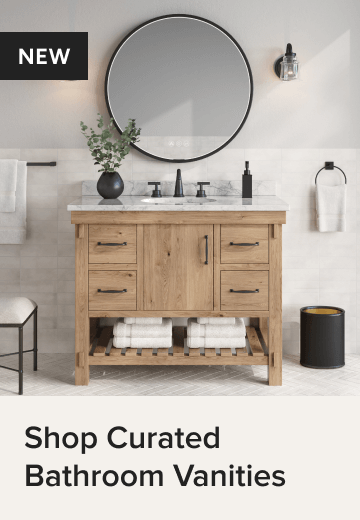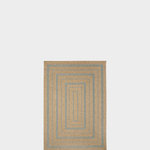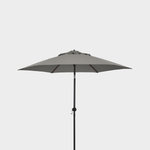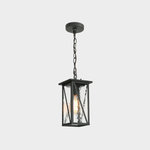How to Lay Out a Master Bedroom for Serenity
Promote relaxation where you need it most with this pro advice for arranging your master bedroom furniture
It might seem simple enough at first — what do you really need in your bedroom besides the bed? But a master bedroom can be as complicated as a living room or family room to plan and lay out, mainly because of precisely that one big feature: the bed. Make the process easier with these suggestions from design pros.
Austin, Texas, designer Allison Jaffe likes to place beds opposite the doorway but always makes sure that the bed isn't right up against a wall or on the diagonal. A diagonal position takes up unnecessary room, and it's hard to tuck sheets on a bed that's placed against the wall.
Penfield suggests thinking about your bedroom priorities first. Do you like to look out a window? Or do you want to face the TV? How do you prefer to enter the room? Personal preference should, above all else, make the final call in the master bedroom. "This is your retreat and your feel-good everyday space," she says. "So often this is the last room we get asked to design — make it the first and spoil yourself."
Penfield suggests thinking about your bedroom priorities first. Do you like to look out a window? Or do you want to face the TV? How do you prefer to enter the room? Personal preference should, above all else, make the final call in the master bedroom. "This is your retreat and your feel-good everyday space," she says. "So often this is the last room we get asked to design — make it the first and spoil yourself."
Buying Nightstands
What size nightstand do you need? Easy — just figure out what you want to keep on top of it. Do you like to have a pile of books, a bottle of water and a reading lamp at hand? Pick a night table with a bigger surface. But if you prefer a more minimalist route, something smaller with drawers might suit you better.
Shop nightstands on Houzz
What size nightstand do you need? Easy — just figure out what you want to keep on top of it. Do you like to have a pile of books, a bottle of water and a reading lamp at hand? Pick a night table with a bigger surface. But if you prefer a more minimalist route, something smaller with drawers might suit you better.
Shop nightstands on Houzz
Jaffe likes to have nightstands that sit at the height of the mattress when the bed is fully assembled — about 27 to 28 inches high, or up to 30 inches for extra-fluffy beds. Stylewise, both she and Leland suggest thinking creatively. A nightstand is great to use as an accent of color or texture. “I think the room is more interesting when each nightstand has its own personality,” says Jaffe. “As long as the nightstands talk to each other or relate to each other in the design, then you can be bold and choose something different for each side.”
If you opt for a wall-mounted light rather than a traditional table lamp, Penfield recommends waiting until you know the height of your headboard and mattress before hardwiring the fixture.
How to Pull Off Mismatched Nightstands
If you opt for a wall-mounted light rather than a traditional table lamp, Penfield recommends waiting until you know the height of your headboard and mattress before hardwiring the fixture.
How to Pull Off Mismatched Nightstands
Traffic and Seating Areas
It’s tempting to get as big a bed as possible, but make sure that it doesn’t feel overwhelming in your room. “Most master suites can handle a king-sized bed,” says Jaffe. “But when in doubt, select a queen.”
Size and place your bed so there’s space for other furniture. “A pair of nightstands and bed crammed wall to wall gives no visual relief,” says Leland. Want an extra seating area in your bedroom? You don’t need a ton of space. According to Leland, a seating area can be as small as 4 by 4 feet for a single chair and a small table. If you have the space, a loveseat and two end tables can usually fit in a 10- by 5-foot area.
It’s tempting to get as big a bed as possible, but make sure that it doesn’t feel overwhelming in your room. “Most master suites can handle a king-sized bed,” says Jaffe. “But when in doubt, select a queen.”
Size and place your bed so there’s space for other furniture. “A pair of nightstands and bed crammed wall to wall gives no visual relief,” says Leland. Want an extra seating area in your bedroom? You don’t need a ton of space. According to Leland, a seating area can be as small as 4 by 4 feet for a single chair and a small table. If you have the space, a loveseat and two end tables can usually fit in a 10- by 5-foot area.
Jaffe suggests making sure you have at least 2 feet of walking room around the perimeter of the bed, especially if you're adding another seating area nearby. Don't cram in extra pieces if you don't have the space. Make sure you can get to the bed without maneuvering around a bunch of furniture or shimmying through a narrow walkway. "Negative space is just as important in a bedroom as it is in a painting," says Leland. "Your eyes need to rest every so often."
















Deal with the bed first. “The bed is like a giant elephant that does not want to budge,” says Minneapolis designer Lucy Penfield. Nashville designer Kippie Leland suggests trying to have the head of the bed on the wall opposite the bedroom’s entrance. Don’t worry too much if that means your headboard will be in front of windows — the positioning is more important. Leland also suggests avoiding having the side of the bed create a visual barrier when you’re walking into the room (although it might be inevitable in some spaces).
Find beds and headboards